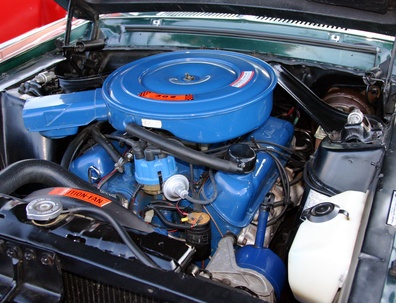
The starter has the repetitive task of turning over the engine to start the vehicle. It draws its energy from the battery to rotate the engine fast enough to allow the firing of the cylinders. Once the ignition key is released, the starter has done its job. Starter motors can give off a number of warning signs, like clicks, loud clanking noises or partial engagement and disengagement. Bendix drives can fail, as well as the interior wiring around the armature of the starter. An observant vehicle owner or amateur repair person can replace a starter with some basic tools.
Place the vehicle in park or neutral with the emergency brake engaged. Raise the hood. Use the proper end wrench to remove the negative batter cable from the terminal. Use the floor jack to lift the front axle and place a jack stand under the frame near each wheel. Make sure you have enough clearance height.
Slide under the vehicle and look for any splash shield or cross member that might be in the way of removing the starter. Loosen the bolts on the shield or cross member and pull it down and away from the starter motor area. Locate the starter and the solenoid--the starter will have a coffee can-like a appearance with a smaller cylinder (solenoid) sitting on top of it. First note the exact position of the wires attached to the solenoid. Remove wires with a small end wrench or socket--there could be a three wires: one large battery wire and two smaller wires.
Use a wrench and socket, along with an extension, to loosen the two or three starter mounting bolts, depending upon the vehicle make and model. Have an assistant hold the weight of the starter while you remove the bolts. Drop the starter down. Inspect the teeth of the fly wheel, if you can see them. Make sure the flywheel teeth look sharp and intact.
Position the new starter under the vehicle. Instruct your assistant to help you lift the starter up into position, and then align it and run the mounting bolts in by hand. Do this swiftly, since the starter can be heavy and awkward to hold. Carefully tighten the mounting bolts, alternating between each bolt until the starter begins to seat. Tighten more firmly, making sure the starter seats completely in its mount. If if does not seat, it means the teeth of the starter gear have not meshed with the flywheel. Back the bolts off and twist the starter from side to side while tightening, to engage the teeth. Then tighten the bolts firmly.
Reconnect the wires over the solenoid posts exactly as you had taken them off. Check to make sure the wire "eyelet" connectors have clean ends and that the wires have no visible cracks in them. Realign the splash shield or cross member with the help of your assistant and screw the mounting bolts in by hand. Tighten all mounting bolts. Slide out from underneath the vehicle.
Use the floor jack to lift the vehicle and remove the jack stands. Lower the vehicle to the ground. Reconnect the negative battery cable to its post. Start the vehicle several times to insure proper starter engagement. Test drive.